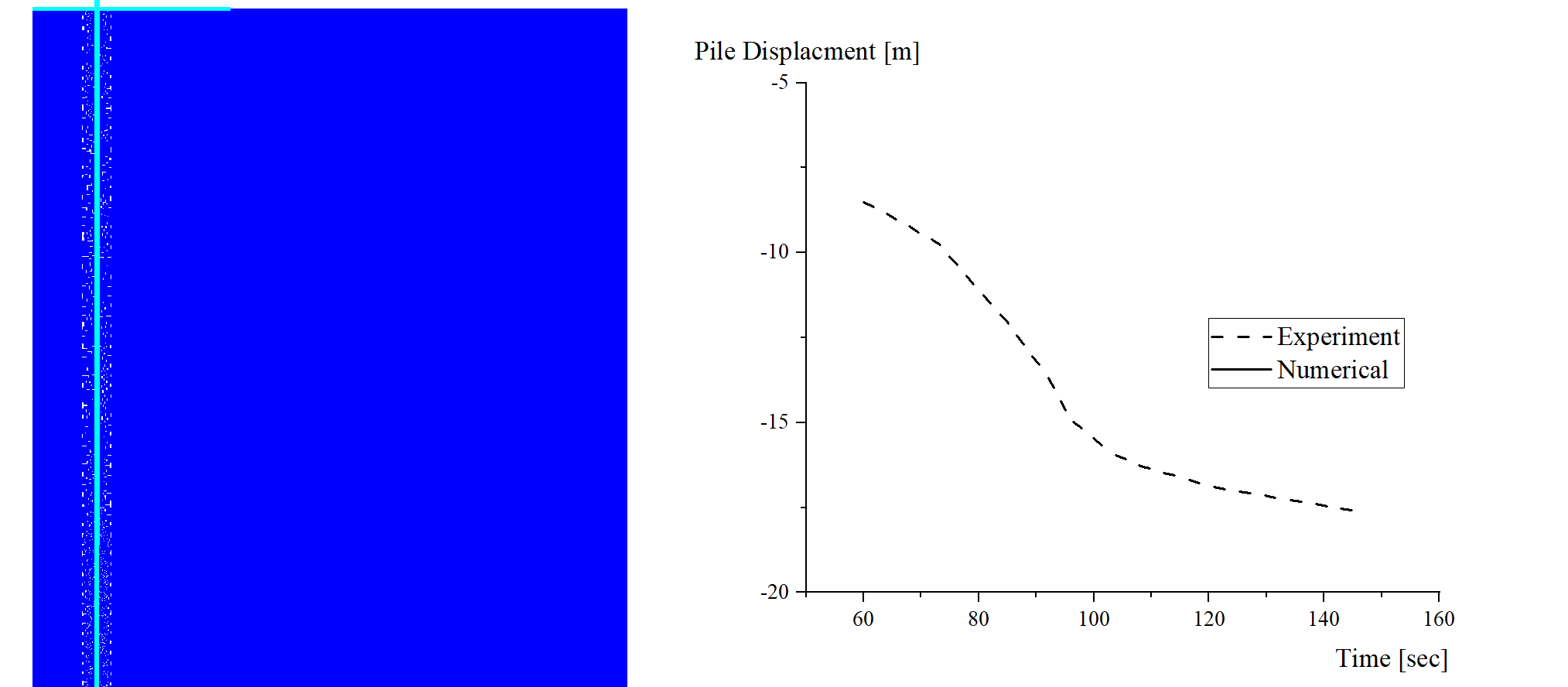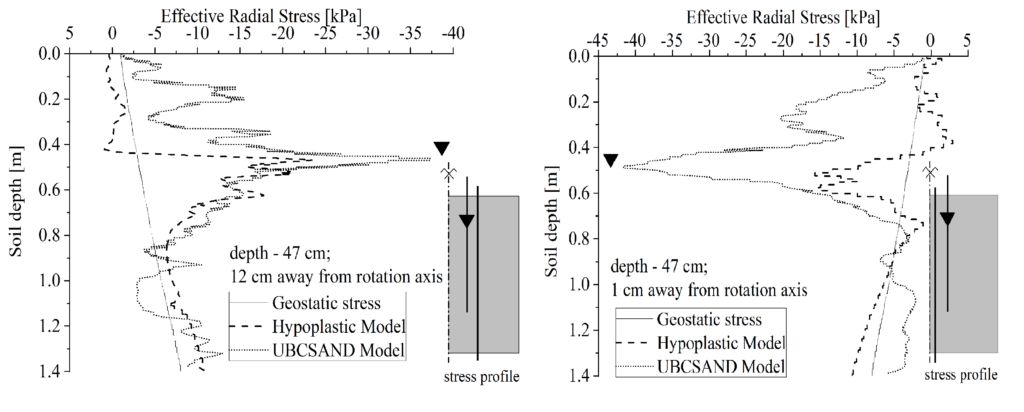
My research primarily involves improving the Convected Particle Domain Interpolation (CPDI) method, an extension to the Material Point Method (MPM). MPM is a meshless continuum-based particle method. I use it to simulate highly dynamic events subject to large material movements, like pile installation and mass movements, as a consequence of liquefaction.

For my Master’s thesis, I worked on improving the contact formulation in CPDI, with the goal of making the contact response more smooth and accurate. The contact elements are assigned separate to the continuum, with the contact forces being evaluated using a penalty function method. The forces are mapped to the background computational grid, where the momentum equations are evaluated as an external force. I co-authored a paper with the results from my thesis and presented it at a conference that took place in Delft.

I implemented UBCSAND model, an elasto-plastic constitutive law that performs quite well in capturing liquefaction due to dynamic loads. After extending my CPDI code to model pore water, I ran a study aimed at capturing large mass movements in Dykes, subjected to seismic load. The findings of this study were published at a conference.

I used my CPDI code together with UBCSAND model for a novel study where I evaluated the performance for pile installation. I numerically simulated the results of a prototype experiment conducted for the wind-energy project KASKASI. This was particularly challenging as the pile was not vibrated with a constant frequency and I had to run the simulation for about 45 seconds.

I was a team member of an externally funded project called VIBRO-III. The goal was to evaluate how the behaviour of soil around the pile varies depending on whether the pile is hammered or vibrated into the soil. I compared the performance of the numerical model with UBCSAND constitutive law against a well-known soil model, the Hypoplastic model. The results were later published in a Journal.

Currently, I am working on a new project called VISSKA. The project is funded by the Federal Ministry of Economic Affairs and Energy. The aim is to develop a numerical forecast model for installing monopiles using the vibro piling method and to numerically estimate the noise emissions. For this project, I will also be developing a method to model free-water and will calculate the pressure waves that propagate through it as the pile is being vibrated.

On November 11, 2022, I successfully defended my dissertation with Magna cum Laude. At the same institute, I am continuing my work as a Post-Doctoral researcher and a Habilitation candidate.
Take a look at my skills and interest here!